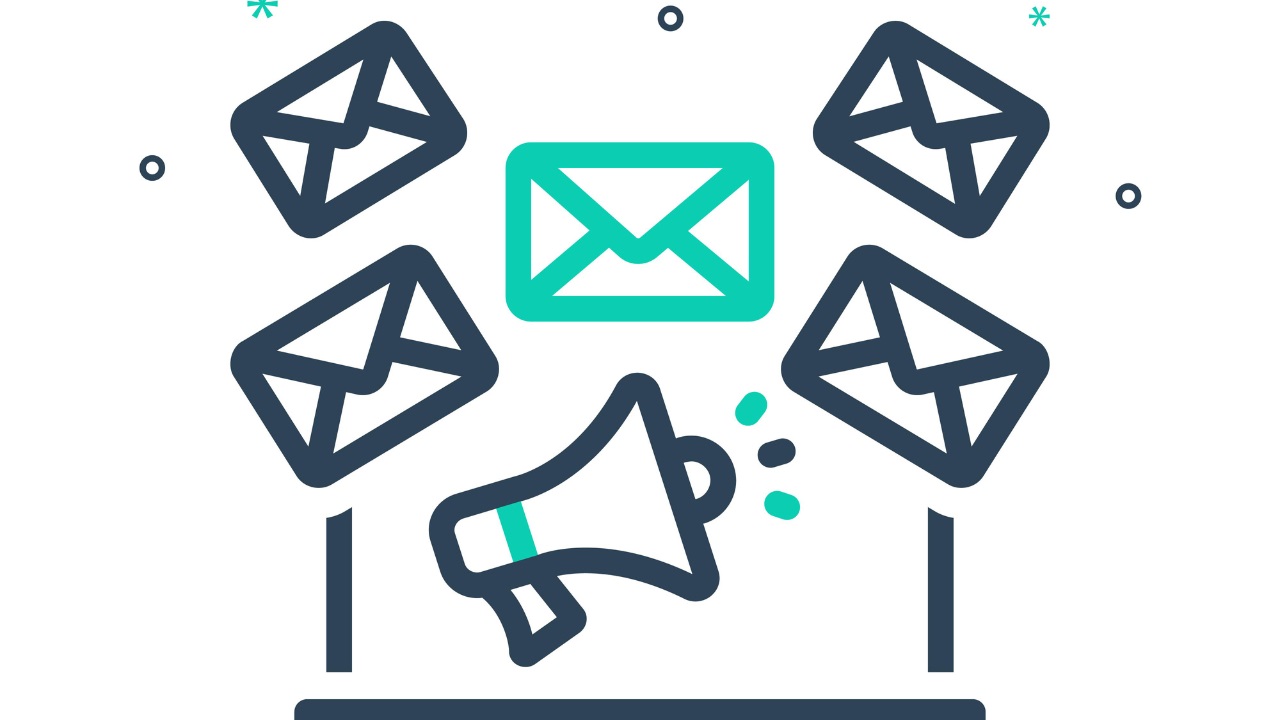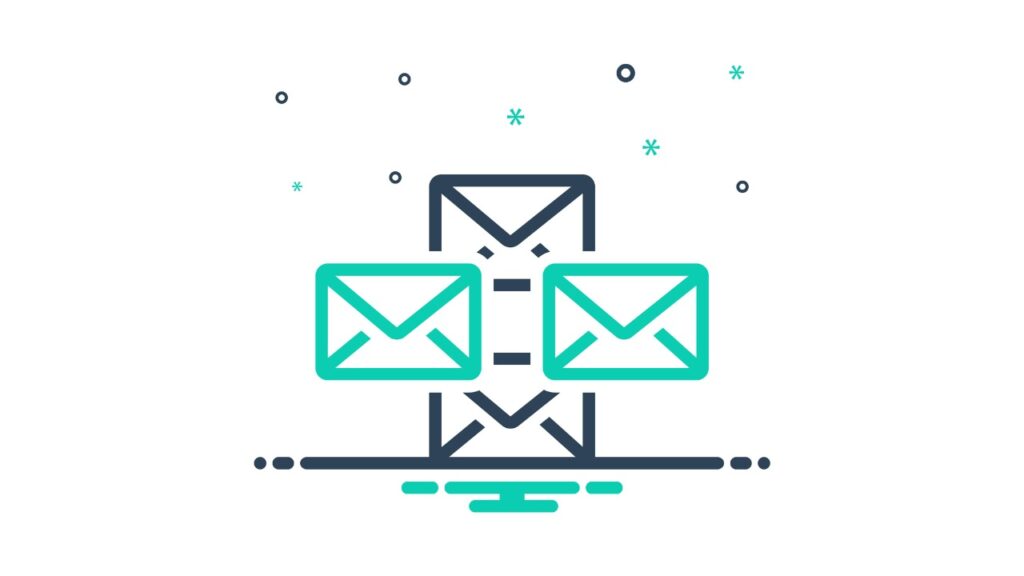Most marketers used to ignore DNS and how important that is when thinking about email martketing, promotion and growing a business. That was until around March 2024 when Google and Yahoo decided that things had to be taken more seriously when it came to email delivery and authentication for their users.
What does this mean?
Well, that email marketers needed (and currently still need) to authenticate the emails they send through DKIM and pass aligned with SPF, which is all taken care of by DMARC analysis and checks by domain providers.
This means that setting up authentication and aligned is super important to ensure your emails even get to recipients’ email inboxes.
DNS is the foundation of your email deliverability, which means that is your records are misconfigured then it creates doubt in the validity and trust email providers put in and treat your emails to their users.
The Key Records for Email Deliverability
- SPF: This defines who can send emails on your behalf of your domain name; commonly, spf “include” records will reference IP sending email servers for the different providers you’re using.
- DKIM: This is an authentication method to prove that your emails weren’t altered during transit: it checks public keys against private kets and ensures things match, much like when you use 2FA to sign into an account.
- DMARC: This provides information to a receiving server about whether to pass or fail checks against your DMARC records. This record basically guides the email receiving server on what it should do in any case and how to authenticate/confirm the email(s) as legitimately coming from (or on behalf of) your domain.
Common Mistakes
- A missing SPF records or having duplicate SPF records. The SPF standard is to flatten records into just one SPF record on a domain or subdomain. See this post about how service providers get around the one record method.
- DKIM is not signed by your DNS records. This essentially means you’re not authenticating the email. However, it could still pass with just SPF and thus be aligned through DMARC, but we’d advise against only one alignment check and to get all of your ducks in a row.
- DMARC policy set too strictly, too early. A common DMARC policy by domains is for
Why not set it up and have everything checked out to ensure you’re all set to go?
Let the DNS Ninjas take care of everything. See this page for our pricing.
Inbox vs Promotions Tab: Why It Matters
Gmail promotions tab was the first that hit people’s inboxes, which sepaarted promotional emails from important ones in a user’s inbox. This was joined by the Updates tab. Now, what should happen is any ecommerce order emails end in the updates tab and and promotional marketing emails end up in the promotions tab, right? Well, that’s probably what the Google engineers wanted to happen, but it doesn’t happen that way:
Is it just Google? No. The big G was the first mover (as usual) in separating tabs (and users can uncheck the boxes used but that’s hugely doubtful for most), but in recent months (early 2025) most other providers have done the same. Frustrating? You bet ya!
For most marketers, being in the main or primary inbox of a user is the “holy grail,” but, keep in mind that if you’re going to be emailing your list (whether a boradcast email or on automations) more than 4 times a month then don’t bother asking your users to move your emails to the primary tab. It’s been the “thing” to do in recent years, but just because one or two, or tewnty, users move your email into the primary tab it doesn’t mean it’ll stay there: it’s common for Gmail (and others) to update settings and move the emails back to the promotions or updates tab.
Why You End Up In Promotions/Updates:
- An overuse of images or CTAs (Calls to Action)
- Language use that sounds too marketing-y (no one likes to be “sold to,” but lots of people like to buy)
- Misaligned sender information (not aligned by DMARC checks) or too many links in the email (or even broken links)
Tips to Land in the Primary Tab:
- Keep your email short and text-based—use some images, but not too many
- Use a recognizable sender name—one that resonates with the recipients
- Send from an authenticated, clean domain that passes DMARC
- Avoid bulk mail headers
Authenticating your domain properly with SPF, DKIM, and DMARC is the first step to being treated as a trusted sender.
Improve Email Open Rates by Fixing DNS Records
High open rates start with visibility. If your emails aren’t making it to inboxes, they’re not being opened—no matter how good your subject line is. Misconfiguration in your DNS records is like delivering a letter in an unsealed envelope with no return address and not signing the letter: it’s as though you’re unknown.
Step-by-Step DNS Fixes That Improve Deliverability
1. Configure SPF Properly
SPF (Sender Policy Framework) tells receiving servers which domains (and their IP ranges) are allowed to send email on your behalf.
- Keep the list of authorized servers updated (this is your “include” parts)
- Avoid multiple SPF records (only one per domain): having multiple will mean you’re allowing the reciciving server
- Use tools to validate your record and ensure you’re correctly aligned (email marketing providers may get you to set this up as a CNAME record)
2. Add a DKIM Signature
DKIM signs your messages with a cryptographic signature to ensure you’re authenticated
- Set this up through your email provider
- Publish your public key in your DNS records
- Check for alignment with your sender domain (your email marketing provider will give you this information)
3. Implement DMARC with Reporting
DMARC ties SPF and DKIM together and tells recipients what to do with unauthenticated emails.
- Start with
p=noneand collect reports for 2 to 6 weeks - Move to
quarantineorrejectas you see the reports come in
4. Bonus: Align Your Return-Path Domain
Make sure your bounce domain (envelope sender) aligns with your visible sender domain. Most email marketers will provide this for you when you set things up: look out for the keyword when you read through their documentation.
The Impact: From Spam to Inbox
Open rates often increase 10-30% when these records are configured correctly. You gain trust from inbox providers, avoid blacklists, and get clearer reporting on what’s working.
DNS NINJAS: Helping Your Emails Reach the Inbox
Is Your Domain on an Email Blacklist? Here’s How to Check and Get Removed
Being blacklisted can feel like having your digital ID revoked. You send emails, but no one receives them. You are completely ignore. Ugh. The trust you’ve built with your audience begins to erode—quietly. You might not even realize there’s a problem until open rates plummet or leads dry up.
HEre, e’ll walk you through the world of email blacklists: what they are, how you get on them, and how to get off.
What is an Email Blacklist?
An email blacklist is a database used by email providers to filter out potentially harmful or spammy emails. If your domain or IP is on one, your emails may be blocked or sent to spam without warning. These lists are managed by organizations like Spamhaus, Barracuda, and SORBS.
Why You Might Be Blacklisted:
- You send lots of unsolicited emails (cold outreach)
- Poor list hygiene (bounces, invalid emails, not cleaning the list often)
- Spam complaints (you need to offer value)
- Malware or phishing links
- A compromised sending server
How to Check Your Status
Use tools like:
Enter your domain and IP address. You’ll then see a list of databases and your current status.
Steps to Get Delisted
- Identify the root cause (check logs, spam reports, etc.).
- Fix the problem (e.g., clean your list, secure your server).
- Follow the delisting process for each blacklist—usually available via their website.
- Document everything you’ve done. Some require proof of correction.
Staying Off Blacklists
- Monitor your domain/IP regularly.
- Set up SPF, DKIM, and DMARC (and actually monitor DMARC reports)
- Keep your lists clean.
- Use opt-in only (or double optin)
- Monitor complaints and bounce rates.
Struggling with email deliverability? We can fix it.
If your marketing emails are landing in spam, going undelivered, or seeing low open rates, DNS Ninjas is here to help. We ensure your emails reach inboxes by optimizing your SPF, DKIM, DMARC, MX, and A records, protecting your sender reputation, and providing real-time monitoring. See this page for our prices.
Why Are Your Emails Not Reaching Inboxes?
Several technical issues can impact your email deliverability:
- ✅ Incorrect DNS Records – Misconfigured SPF, DKIM, or DMARC can cause emails to be rejected.
- ✅ Blacklisted IPs or Domains – Your sending domain or IP might be flagged as spam.
- ✅ Poor Email Authentication – Without proper authentication, ISPs may block your messages.
- ✅ Low Sender Reputation – Past issues with spam complaints or bounces can hurt your credibility.
We diagnose and fix these issues, ensuring your emails are properly authenticated and delivered.
How DNS Ninjas Help
- 🔍 Email Deliverability Audit – We analyze your email setup and identify issues.
- 🔧 SPF, DKIM & DMARC Configuration – We set up and optimize your authentication records.
- 🚀 Blacklist Monitoring & Removal – We check if your domain or IP is flagged and help get it delisted.
- 🛡️ Ongoing Monitoring & Alerts – Stay ahead of issues with proactive monitoring.
Why Choose DNS Ninjas?
- ✅ Expertise You Can Trust – We specialize in email authentication & deliverability.
- ✅ Proven Results – Clients see 20%+ improvement in inbox placement within days.
- ✅ Fast & Affordable – Get results quickly with pricing that fits your business needs (see prices).
- ✅ Done-for-You Service – We handle the technical setup, so you don’t have to.
Let’s Fix Your Email Deliverability
🚀 Get a Video Audit for just $25 and find out what’s blocking your emails from being delivered.
Your emails deserve to be seen. DNS Ninjas makes sure they are.
One last thing: be careful of listing to “gurus” who suggest to use the “Re:” method in marketing emails: it’s an attempt to trick people into thinking that they’ve been having a conversation with you already when they aren’t. Email service providers like Gmail, Yahoo and Microsoft aren’t stupid. They know the email you’re sending from your email marketing admin area isn’t a business email due to the IP range it’s coming from, the sender who’s sending it (return path) and the unsubcribe link/button and address information at the bottom of the email. That’s a surefire way of getting this email and future ones straight into the promotions tab or the spam folder.



